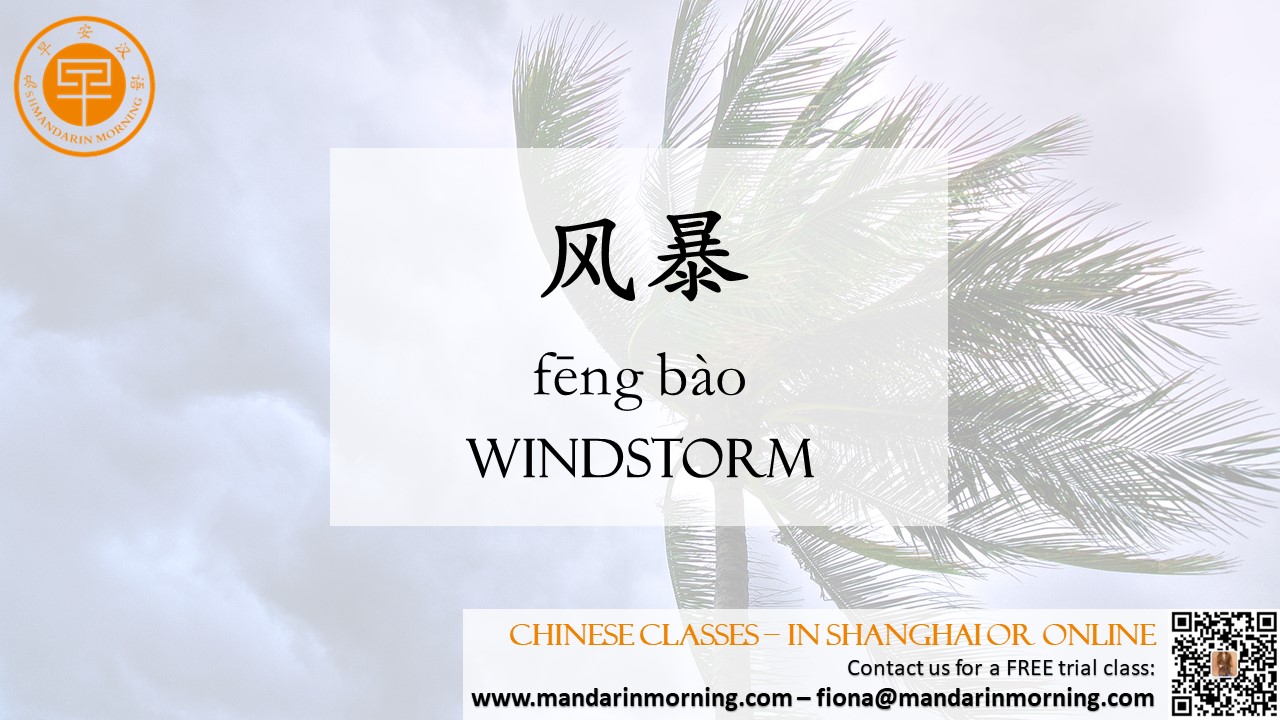| Although they’re fortunately much less common than the other weather events, it’s also important to know how to discuss extreme weather events in Chinese. Useful vocabulary for talking about extreme weather events is listed in the table below.  风暴 (fēngbào) - windstorm; storm 雷雨 (léiyǔ) - thunderstorm 暴风雪 (bàofēngxuě) - blizzard; snowstorm 雹暴 (báobào) - hailstorm 旱灾 (hànzāi) - drought 水灾 (shuǐzāi) - flood 洪水 (hóngshuǐ) - floodwaters; flood 台风 (táifēng) - typhoon 飓风 (jùfēng) - hurricane 龙卷风 (lóngjuǎnfēng) - tornado 沙暴 (shābào) - sandstorm Interestingly, hurricanes (飓风 jùfēng) and typhoons (台风 táifēng) are actually the same thing. A more general term for both terms is “tropical cyclone.” When these storms occur in either the Western Pacific or North Indian Oceans, then they are referred to as “typhoons.” Since China is in the Western Pacific region, Chinese people refer to their tropical cyclones as “typhoons.” These storms are frequent in southern China. A note on (Chinese) sandstorms If you don’t live in a desert, you may not be used to thinking about sandstorms as a possible weather condition. You also may not associate sandstorms with China. Sandstorms are, however, considered a meteorological event, and they are in fact relatively common in China, including in Beijing. Thus, the word 沙暴 (shābào; sandstorm) should be included on any weather watcher’s Chinese vocabulary list. Talking about air quality in Chinese While air quality (空气质量 kōngqì zhíliàng) is not technically a type of weather, it can definitely affect your enjoyment of the great outdoors. Concern about air pollution in China is becoming increasingly common, and many people have developed the habit of checking the air quality before leaving the house. Instead of just referring to “smog,” or 雾霾 (wùmái) in Chinese, it’s common to refer to the fine particles that make up the smog. The most dangerous of these particles are referred to as PM 2.5, in which the PM stands for “particulate matter.” In China, this English abbreviation is used, but it’s read as PM 二点五 (PM èr diǎn wǔ). Note that PM 2.5 is used in China to refer to numbers from the Air Quality Index (AQI), a scale that’s used to measure the amount of particulate matter found in the air. The higher the AQI, the worse the pollution. Here’s an example of how to talk about air quality on a heavily polluted day: 今天空气质量很差,PM 2.5已经超过500了。(Jīntiān kōngqì zhíliàng hěn chà, PM 2.5 yǐjīng chāoguò 500 le) - The air quality is really poor today. The PM 2.5 (or AQI) has already passed 500. |